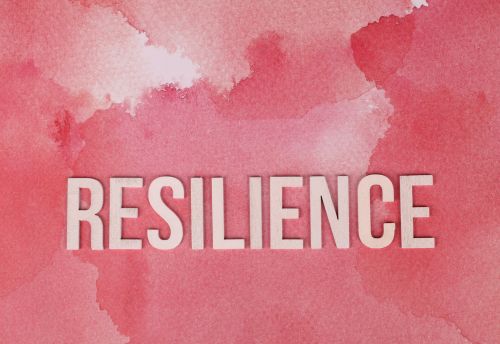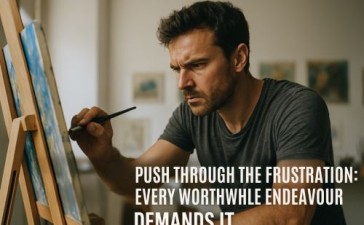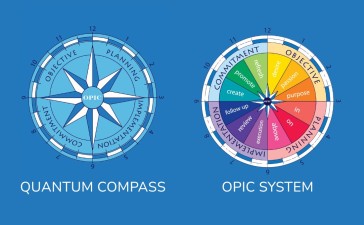Resilience—a term we often hear but seldom fully explore—has become increasingly significant in our complex and challenging world. At its core, resilience refers to the capacity to recover quickly from difficulties, to spring back into shape after being bent or stretched. However, this deceptively simple concept takes on nuanced meanings across various domains of human experience. From personal psychology to organizational management, from ecological systems to community development, resilience manifests differently while maintaining its essential quality of adaptation and perseverance in the face of adversity.
Psychological Resilience: The Inner Capacity to Withstand Storms
In the psychological realm, resilience represents an individual’s ability to mentally or emotionally cope with crisis, trauma, or prolonged periods of stress. It’s not merely about “toughing it out” but rather about developing healthy adaptive mechanisms that allow for growth through hardship. Psychologically resilient individuals don’t deny their pain or difficulties; instead, they acknowledge them while maintaining perspective and cultivating the emotional agility to move forward.
This form of resilience isn’t innate or fixed—it can be developed through various practices. Maintaining strong social connections, cultivating optimism, practicing mindfulness, developing emotional awareness, and establishing purpose all contribute to psychological resilience. Those who exemplify this quality often demonstrate post-traumatic growth, finding meaning and even opportunity in their most challenging experiences.
Professional Resilience: Adapting in Dynamic Work Environments
In professional contexts, resilience takes on a more action-oriented dimension. It encompasses the ability to adapt to changing circumstances, learn from setbacks, and persist toward goals despite obstacles. In today’s rapidly evolving workplace, with technological disruptions and organizational restructuring becoming commonplace, professional resilience has never been more valuable.
Resilient professionals approach change as an opportunity rather than a threat. They remain flexible in their thinking, open to new approaches, and willing to acquire new skills. When faced with failure, they practice reflective learning rather than self-criticism. This doesn’t mean they never experience disappointment or frustration—rather, they develop strategies to process these emotions constructively while maintaining focus on long-term objectives. In essence, professional resilience combines adaptability with purposeful persistence.
Organizational Resilience: Systems That Bend Without Breaking
Organizations demonstrate resilience through their ability to anticipate, prepare for, respond to, and adapt to incremental change and sudden disruptions. A resilient organization maintains its core functions while learning, adjusting, and evolving to meet new challenges.
This form of resilience involves redundancy (building backup systems), diversity (cultivating varied perspectives and approaches), modularity (creating independent components that can function separately if needed), and adaptability (institutionalizing continuous learning). Resilient organizations foster cultures that balance stability with innovation, maintaining strong values while embracing necessary change. They create environments where employees feel psychologically safe to acknowledge problems, suggest solutions, and learn from mistakes.
The COVID-19 pandemic provided a stark test of organizational resilience, as companies that could rapidly pivot to remote operations, digital service delivery, and new market demands thrived, while those rigidly attached to pre-pandemic models struggled to survive.
Community Resilience: Collective Strength in Adversity
Communities demonstrate resilience through their collective capacity to respond to and recover from disruptive challenges. This might involve natural disasters, economic downturns, public health crises, or social upheavals. Resilient communities leverage social capital—the networks of relationships among people that enable society to function effectively.
Key elements of community resilience include strong social cohesion, inclusive leadership, diverse economic opportunities, robust infrastructure, effective communication networks, and shared community narratives that foster identity and purpose. When communities face crises, these elements enable coordinated response, mutual support, and collaborative problem-solving.
New Orleans after Hurricane Katrina offers instructive examples of both community resilience challenges and strengths. While systemic inequalities hampered recovery in many neighbourhoods, strong cultural identity and social networks enabled remarkable rebuilding efforts in others, demonstrating how shared purpose can fuel collective resilience.
Ecological Resilience: Natural Systems’ Capacity for Renewal
In ecological contexts, resilience refers to an ecosystem’s ability to absorb disturbance while maintaining its basic structure and functions. This concept is particularly relevant as climate change introduces unprecedented stresses to natural systems worldwide.
Ecological resilience depends on biodiversity (variety of species performing different functions), connectivity (pathways for species movement and resource flow), redundancy (multiple species performing similar ecological functions), and adaptive capacity (genetic diversity allowing for evolutionary response to changing conditions).
Human activities often reduce ecological resilience by simplifying ecosystems, fragmenting habitats, introducing pollutants, and altering climate patterns. Conservation efforts increasingly focus on building resilience rather than simply preserving current conditions—recognizing that ecosystems must adapt to survive in our changing world.
Economic Resilience: Flexibility Amid Market Turbulence
Economic resilience encompasses the ability of markets, industries, and individual businesses to withstand, adapt to, and recover from shocks. This form of resilience balances efficiency with adaptability, recognizing that systems optimized solely for short-term performance often lack the flexibility to navigate disruption.
Diversification serves as a cornerstone of economic resilience—whether diversifying investment portfolios, revenue streams, supply chains, or regional economies. Other key factors include modularity (limiting the spread of economic contagion), adaptability (rapid reallocation of resources), and innovation (developing new solutions to emerging challenges).
Conclusion: The Common Thread of Adaptive Capacity
Across these diverse domains, resilience consistently involves three fundamental capabilities: absorbing stress, reorganizing in response to change, and learning through the process. Whether we’re examining an individual, organization, community, ecosystem, or economy, resilience never means rigid resistance to change or simple return to a previous state.
Instead, true resilience represents a dynamic process of adaptation—maintaining core identity and functions while evolving to meet new realities. In our increasingly volatile, uncertain, complex, and ambiguous world, cultivating this multifaceted capacity may be our most essential collective task. By understanding resilience in its various manifestations, we can more effectively build this critical quality across the interconnected systems that shape our lives and shared future.
Want to learn more?
- Find out more
- Launch Pad + Accelerator Expressions of Interest
- Selling and Licensing Your Art & Designs Around the World with ArtSHINE.
We’re here to help you to take action, just like we’ve helped thousands of other entrepreneurs, business owners, and creative professionals all around the globe.
Now is the time to let your passion SHINE.
Now is the time to Make Tomorrow Today!
To your success, Vinh Van Lam and Stuart Horrex Cofounders
ArtSHINE.com
Tags:Resilience





